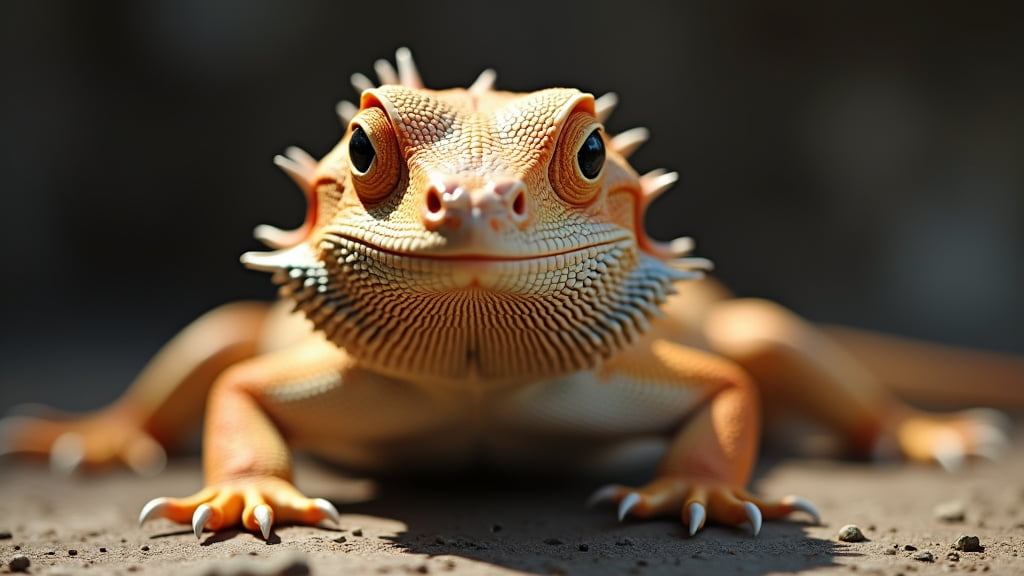Do you ever feel that your bearded dragon is not quite themselves? Just like us, these fascinating reptiles can experience stress, which can have a significant impact on their wellbeing. Recognising the signs early is crucial for maintaining their health and happiness. In this blog post, we’ll explore how you can identify stress in your bearded dragon and provide practical advice to help alleviate it.
What is Stress in Bearded Dragons?
Before diving into the signs and solutions, it’s essential to understand what stress is for bearded dragons. Stress in these reptiles can result from various factors, including improper habitat conditions, health issues, and even handling.
Understanding the Basics
Bearded dragons, also known as Pogona vitticeps, are generally hardy creatures, but they are not immune to stress. In my personal experience of owning several bearded dragons over the years, I’ve found that even subtle changes in their environment can trigger stress. Your bearded dragon relies on you to recreate their natural habitat as accurately as possible.
Common Causes of Stress
Several factors can contribute to a bearded dragon’s stress levels. Here are some common causes:
- Inadequate habitat conditions: Incorrect temperature, humidity, or lighting.
- Poor diet: Unbalanced nutrition can lead to health issues.
- Handling: Excessive or inappropriate handling.
- Environmental changes: Changes in surroundings or presence of other pets.
Signs Your Bearded Dragon is Stressed
Knowing the signs to look out for is key to recognising stress in your bearded dragon. Being attuned to their behaviour means you can act quickly to rectify any issues.
Physical Signs
One of the most immediate indicators that your bearded dragon is stressed is physical changes.
- Darkened Colouration: Often, a stressed bearded dragon will darken in colour, especially along their beard.
- Lethargy: A stressed dragon might seem more sluggish than usual.
- Weight Loss: Unexplained weight loss can be a significant stress indicator.
- Rapid Breathing: If you notice your dragon breathing rapidly or puffing up, stress might be a cause.
Behavioural Signs
Behavioural changes are another strong indicator of stress.
- Glass Surfing: This term describes when your dragon is repeatedly bumping their nose against the glass or climbing the enclosure.
- Hiding: While bearded dragons do hide, excessive hiding can be a stress signal.
- Loss of Appetite: A stressed dragon might refuse to eat or show less interest in food.
Unusual Aggression
In my own bearded dragons, I’ve sometimes observed unusual aggression when they were stressed. Normally docile dragons might suddenly become more aggressive or skittish.
How to Alleviate Stress in Bearded Dragons
Once you’ve identified that your bearded dragon is stressed, it’s time to take action. Alleviating stress involves addressing the root causes and providing a calm, stable environment.
Optimise Habitat Conditions
First and foremost, ensure that their habitat is set up correctly.
- Temperature and Lighting: Maintain proper temperatures (basking spot around 38-43°C and cool end around 22-26°C) and provide UVB lighting 10-12 hours a day.
- Substrate: Use safe substrates such as reptile carpet or paper towels to avoid impaction.
- Hiding Spots: Provide plenty of hiding spots to help them feel secure.
Balanced Diet
Diet plays a crucial role in your dragon’s overall health.
- Varied Diet: Offer a balanced diet of vegetables, insects, and occasionally fruit.
- Hydration: Ensure they have access to fresh water and consider misting them to keep them hydrated.
Handling and Interaction
Handling your dragon properly can significantly reduce their stress.
- Gentle Handling: Handle them gently, avoiding sudden movements.
- Consistent Interaction: Regular but gentle interaction helps them become accustomed to handling.
Environmental Stability
Changes in the environment can be a major stressor.
- Minimise Changes: Keep environmental changes to a minimum and introduce new elements slowly.
- Reduce Noise: Loud noises and vibrations can be stressful, so keep their enclosure in a quieter part of the house.
Conclusion
Recognising and alleviating stress in bearded dragons is essential for their health and happiness. By being aware of the physical and behavioural signs of stress and addressing the root causes, you can ensure your bearded dragon leads a comfortable and fulfilling life. Remember, if you notice severe or persistent signs of stress, it’s always best to consult with a veterinarian who specialises in reptiles.
Reducing stress not only improves your dragon’s quality of life but also strengthens the bond between you and your exotic pet. So, keep an eye out for those subtle signs and make adjustments as needed to keep your bearded dragon content.
Meta Description:
Learn how to recognise and alleviate stress in bearded dragons with our comprehensive guide. Discover practical advice, expert insights, and tips for creating a stress-free environment.
Internal Links:
External Links:
By following these guidelines and tips, you’ll be well on your way to ensuring a happy, healthy life for your bearded dragon. Have any tips or experiences of your own? Feel free to share them in the comments below!

